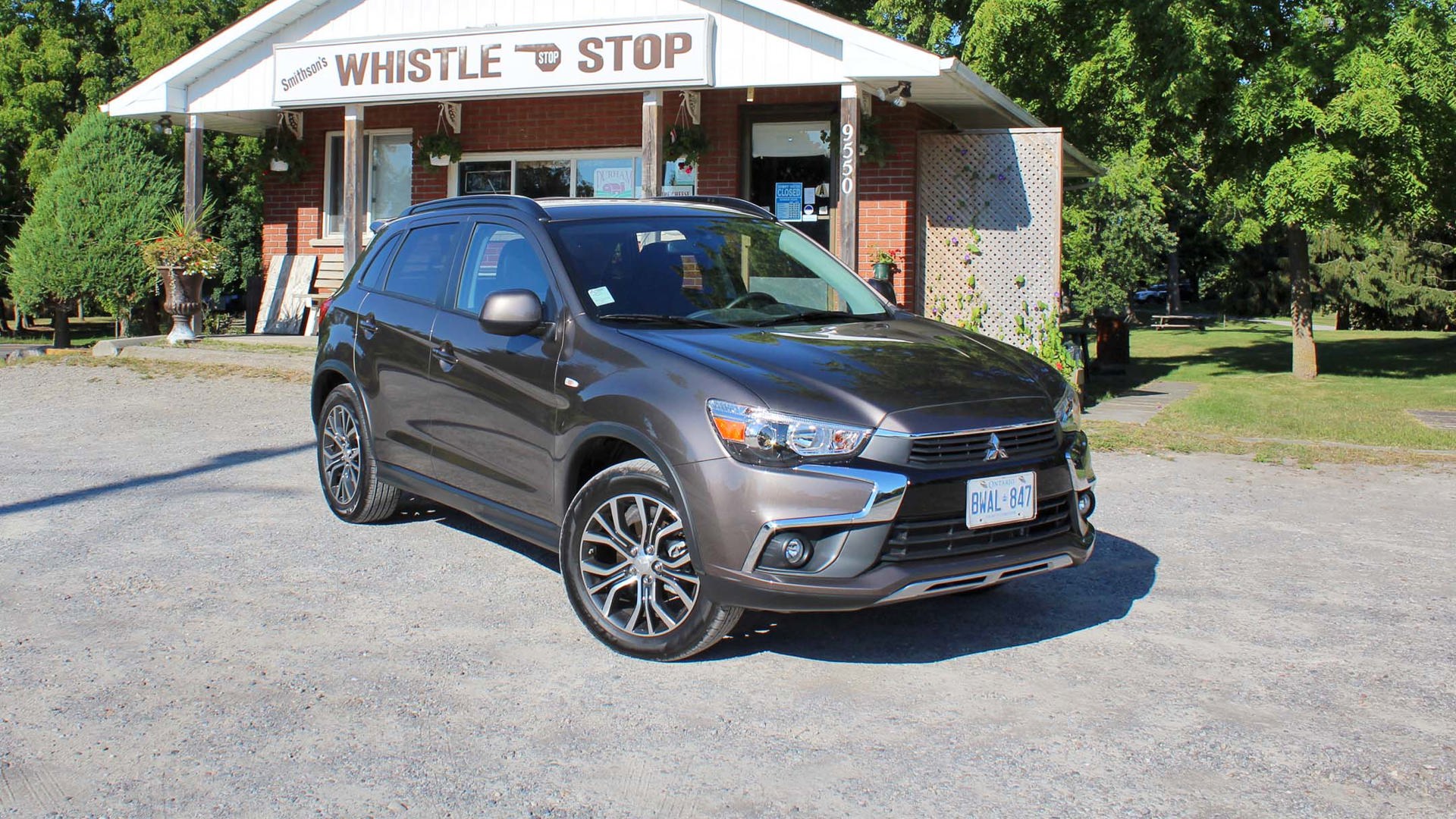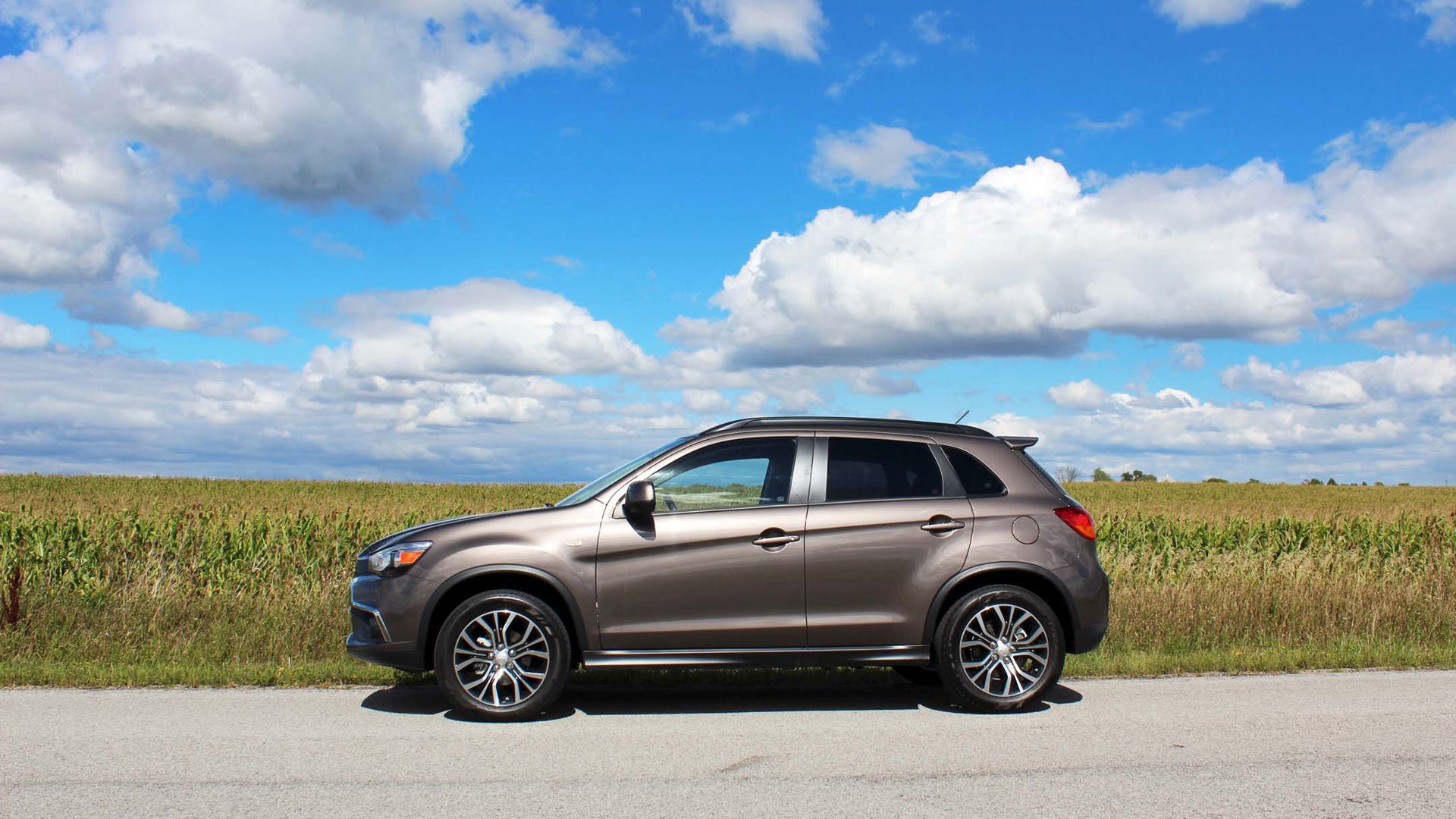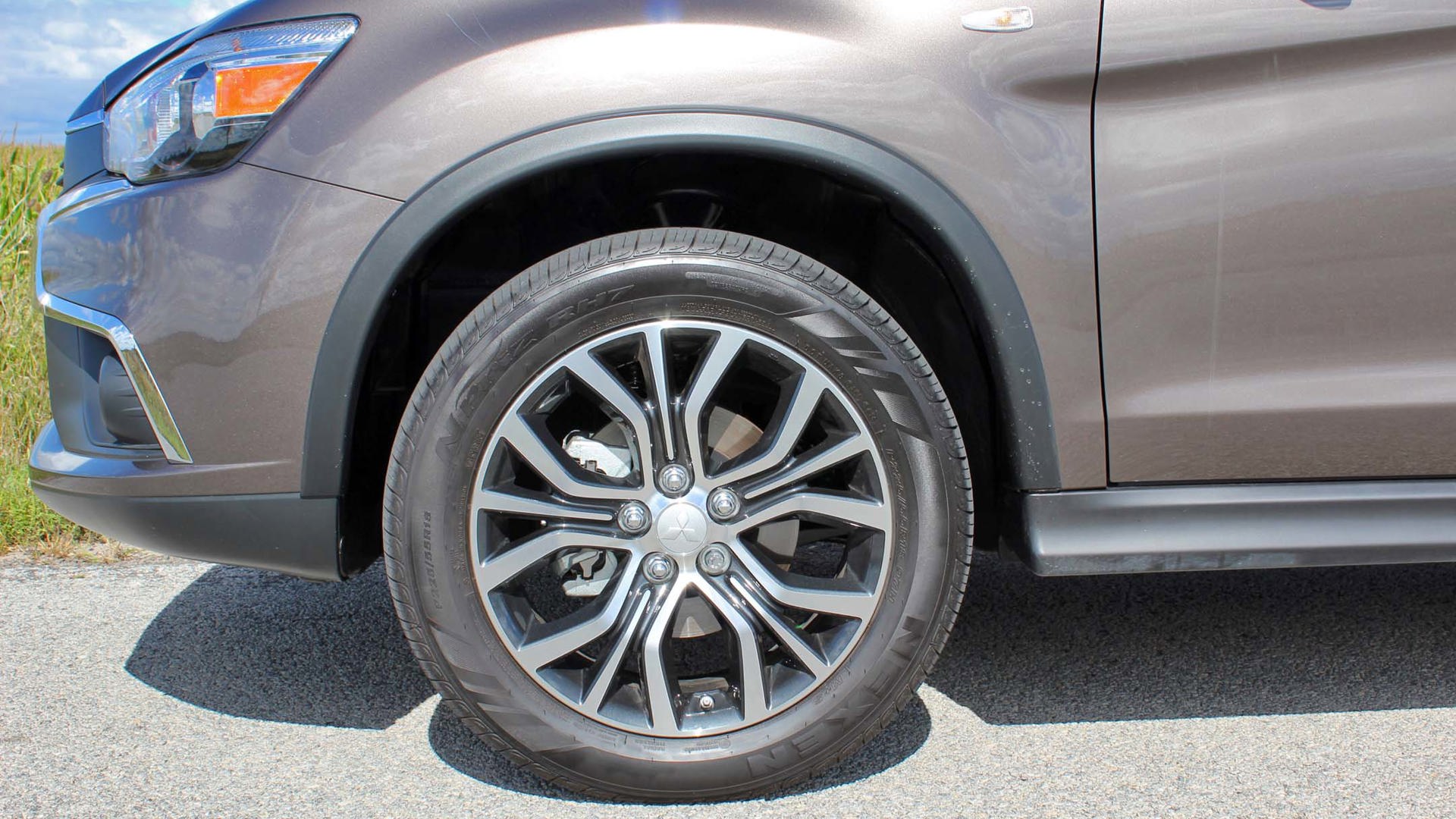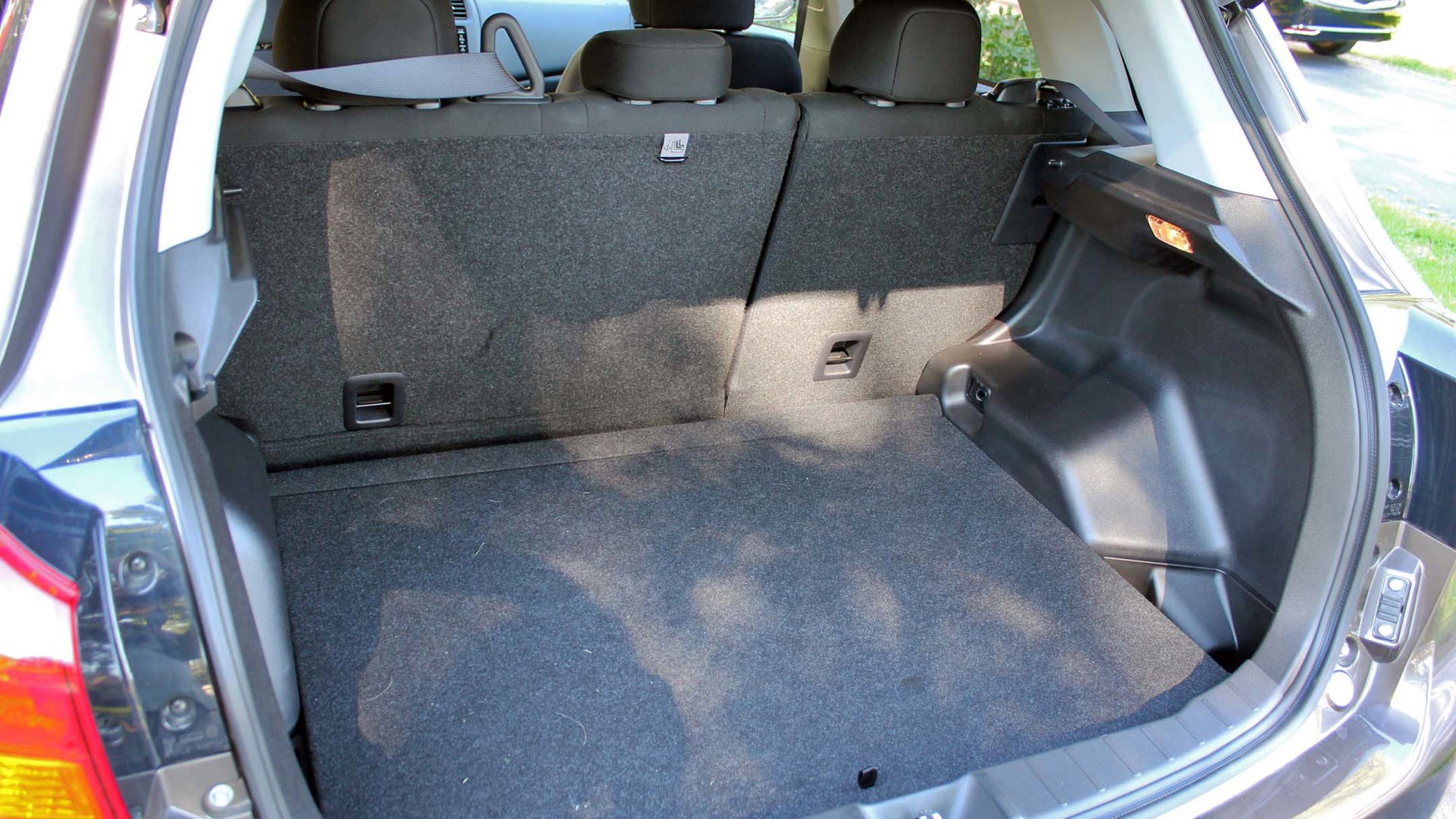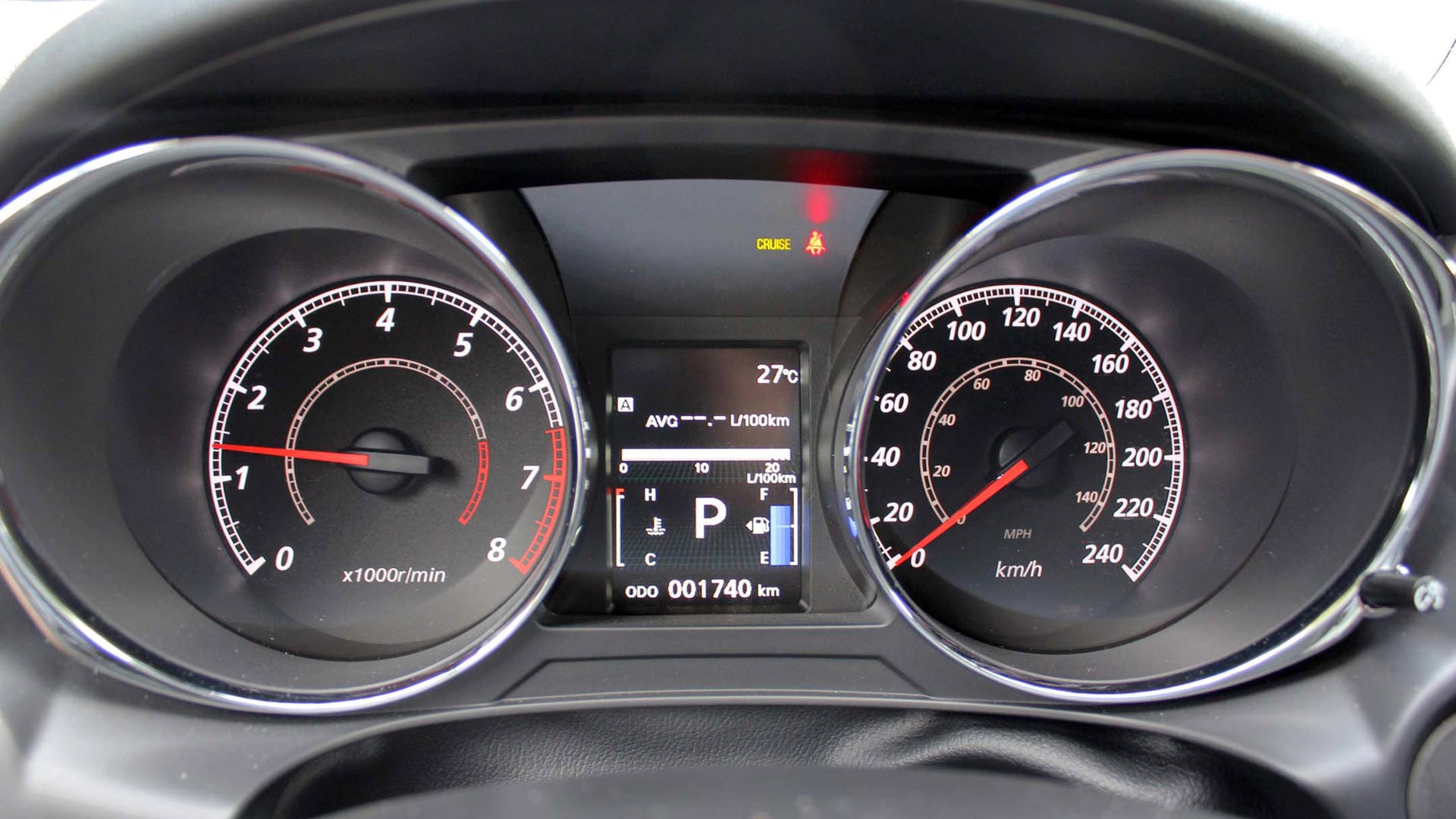 AutoTrader SCORE
AutoTrader SCORE
-
STYLING8/10
-
Safety7/10
-
PRACTICALITY6/10
-
USER-FRIENDLINESS7/10
-
FEATURES6/10
-
POWER6/10
-
COMFORT6/10
-
DRIVING FEEL8/10
-
FUEL ECONOMY6/10
-
VALUE7/10
The sub-compact SUV segment is one of the fastest growing in the industry. Every time you turn around, there seems to be a new one of these diminutive critters running about. Recent additions to the fold include the Fiat 500X, Jeep Renegade, Honda HR-V and Buick Encore.
To these eyes, the RVR still cuts a sharp profile, coming across as chunky, solid and purposeful.
Today we’re looking at an elder statesman. The third-gen Mitsubishi RVR first showed its face at the 2010 New York Auto Show, which means it is now entering its seventh year – an eternity in the car biz. However, Mitsubishi has just refreshed the RVR for mid-2016. Is it enough to keep the old girl in the game or is she too far past her sell-by date?
Said refresh includes the automaker’s “Diamond Shield” front-end treatment, a new steering wheel plus a few items that spruce up the higher trims – fresh 18-inch wheel design, powered and folding side mirrors with LED indicators, auto-dimming interior mirror with Homelink, new seat fabrics and a 6.1-inch touchscreen. This comes on the heels of last year’s mechanical upgrades that bestowed a CVT (continuously variable transmission) and available 2.4L four-cylinder making 168 horsepower and 167 lb-ft of torque.
The 2016 Mitsubishi RVR opens at $19,998 for the ES 2WD – this is fitted with a 148-hp, 145 lb-ft 2.0L four-cylinder and five-speed manual. Tested here is the RVR 2.4 SE 4WD Limited at $27,498. It runs with the continuously variable transmission and more potent 2.4L four making 168 horsepower and 167 lb-ft of torque.
The Limited also gets 18-inch alloys, roof rails, a rear spoiler, upgraded seat fabrics and the aforementioned 6.1-inch touchscreen interface.
To these eyes, the RVR still cuts a sharp profile, coming across as chunky, solid and purposeful. And while the Diamond Shield looks overwrought on bigger-brother Outlander, it integrates nicely here in the RVR, giving the little ute a modern, upscale visage. This tester’s Quartz Brown Metallic hue is new for 2016.
Step inside, however, and the interior gives the game away. It’s a dated affair awash in hard plastics. Retro touches include fully manual seats, no auto headlight setting and a good-old-fashioned twist key. Still, overall functionality and ergonomics are good. Clearly lit major gauges, big HVAC dials and real knobs for volume and tuning. Are you listening, Honda?
Nestled between the major gauges is a colour screen that displays trip computer info, fuel consumption, odometer, drive mode and the like.
The new 6.1-inch interface has an easily deciphered menu system, and the audio system in this tester was pretty decent, if not outstanding.
The RVR’s upright greenhouse and large exterior mirrors mean visibility is good both forwards and backwards.
And here’s a shiny shout-out to Mitsubishi’s storied rally history: a pair of big column-mounted metal shift paddles that let you toggle between six virtual gears programed into the CVT. You can actually have a bit of fun with these. While it’s nothing like nipping between cogs in a well-sorted dual-clutch tranny, the “gears” do come up quickly, giving a modicum of control over the proceedings. Tapping the shift lever to the left puts the tranny in sport mode, and here it will hang on to the gears to the redline if you’re so inclined.
The 2.4L four plays along too. It’s a strong and smooth performer that gives the RVR a decent turn of speed when the revs crest 3,500 rpm.
Mitsubishi has tuned the underpinnings (front MacPherson Strut and rear multi-link) to provide good ride quality with decent body control – it stays commendably flat in the corners. The steering is accurate too, although an on-centre dead spot had me making constant little corrections on the highway to keep the RVR on the straight and narrow.
So the RVR’s somewhat fun-to-drive character does factor in to the whole experience a wee bit, if that kind of stuff matters. By comparison, the Honda HR-V is a tepid and joyless thing, with a stiff, uneven ride. In the plus ledger, the Honda offers better value, has more cargo room and gets considerably better fuel economy.
Mitsubishi’s All Wheel Control system has three settings: 2WD (front wheels driven only), 4WD Auto (power sent to the rear wheels as needed) and 4WD Lock (fixed 50:50 split).
The fabric front seats get a meh from this reviewer. They are flat and unsupportive, but in the plus ledger are easy to get in and out of, and caused no discomfort on longer journeys. The RVR’s 60/40 split back seats prove fine for two six-foot adults – there’s lots of headroom and, for the class, generous legroom. Behind you’ll find a usefully shaped and easily accessed 569 litres of load space. There’s no hidden compartment under the load floor but there is a full-size spare tire. The rear seats easily flip down creating an almost flat floor, and cargo room expands to 1402 litres.
Oh, and don’t be alarmed by the flexy front fenders – they’re plastic so you need not worry about rust and dents marring your forward flanks.
In December of 2015 we included a Mitsubishi RVR 2.4L GT AWC in a seven-spot sub-compact crossover comparison test, and it landed in last place. Its interior was plagued with rattles and buzzes and the front seats rocked on their mounts. There was none at that here in this 2016 model. Granted, this tester was fresh off the boat, but it does suggest these 2016 Japanese-built RVRs are better screwed together. From 2012 to 2015 the North American RVR came from a plant in Normal, Illinois.
So is the aging Mitsubishi RVR still a viable option for those kicking tires in the sub-compact crossover category? It’s not as slick as most new offerings, nor does it offer outstanding value or, in the case of this 2.4L, particularly good fuel economy. But it’s a jaunty little thing that drives well, is immensely functional, has some character and shows an elemental toughness. Plus, there’s no denying the appeal of Mitsubishi’s impressive 10-year powertrain / 5-year bumper-to-bumper warranty.
| Engine Displacement | 2.4L |
|---|---|
| Engine Cylinders | 4 |
| Peak Horsepower | 168 hp |
| Peak Torque | 167 lb-ft |
| Fuel Economy | 10.5 / 8.6 / 9.6 (L/100 km, city/hwy/comb) |
| Cargo Space | 569 L, 1402 L seats folded |
| Model Tested | 2016 Mitsubishi RVR 2.4 SE 4WD Limited |
| Base Price | $27,498 |
| A/C Tax | $100 |
| Destination Fee | $1,450 |
| Price as Tested | $29,048 |
|
Optional Equipment
None
|
|
